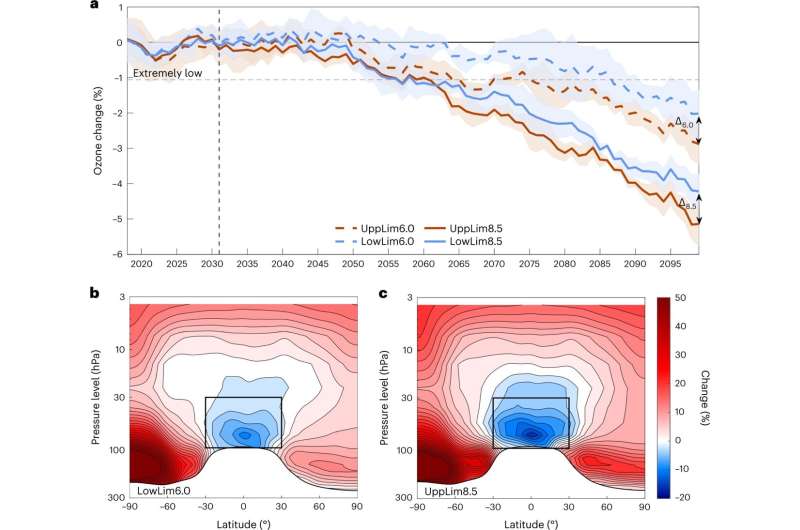May 29, 2023 report
This article has been reviewed according to Science X's editorial process and policies. Editors have highlighted the following attributes while ensuring the content's credibility:
fact-checked
peer-reviewed publication
trusted source
proofread
Researchers suggest very short-lived halogens partially to blame for ozone depletion over the tropics

An international team of climate scientists has used climate models to show that some very short-lived substances are partially to blame for ozone depletion over the tropics. In their paper published in the journal Nature Climate Change, the group describes how they used a variety of climate models to simulate the impact of very short-lived substances (VSLS) on the lower parts of the ozone layer over the tropics and what they learned by doing so. Seok-Woo Son with Seoul National University, has published a News & Views piece in the same journal issue outlining the work done by the team on this new effort.
In the 1980s, it became clear that substances used by humans were harming the ozone layer, which is a layer of the Earth's stratosphere with a high concentration of ozone that is very important for life on Earth because it absorbs UV radiation. Worried about the damage, world leaders established the Montreal protocol in 1987. It called for the discontinuation of chlorofluorocarbons and some other aerosols. The protocol worked as hoped, and the ozone layer began to recover.
But more recently, it has been found that there is still a problem over the tropics, and depletion there is still occurring. Some have suggested it is due to swift upward warm air flow, resulting in winds blowing from the tropics toward the poles, which leaves the stratosphere over the tropics with a thinner ozone layer. In this new effort, the researchers suggest that such an explanation is only partially right. They believe that there are some other gases that are also part of the problem.
Suspecting that halogenated VSLS might be playing a role in ozone depletion over the tropics, the research team ran a host of simulations using what they describe as a variety of sophisticated climate models to show what happens when VSLS enter the atmosphere. They found that these substances live long enough to make their way to the lower parts of the stratosphere where they cause damage to the lower parts of the ozone layer. The VSLS were able to do this, the research team noted, because of the strong upward winds over the tropics.
Their simulations showed that VSLS are likely responsible for up to 25% of the damage done to the lower part of the ozone layer over the tropics over the past two decades. They conclude their study by suggesting that VSLS be added to the list of banned substances.
More information: Julián Villamayor et al, Very short-lived halogens amplify ozone depletion trends in the tropical lower stratosphere, Nature Climate Change (2023). DOI: 10.1038/s41558-023-01671-y
Seok-Woo Son, Stratospheric ozone loss by very short-lived substances, Nature Climate Change (2023). DOI: 10.1038/s41558-023-01687-4
Journal information: Nature Climate Change
© 2023 Science X Network




















